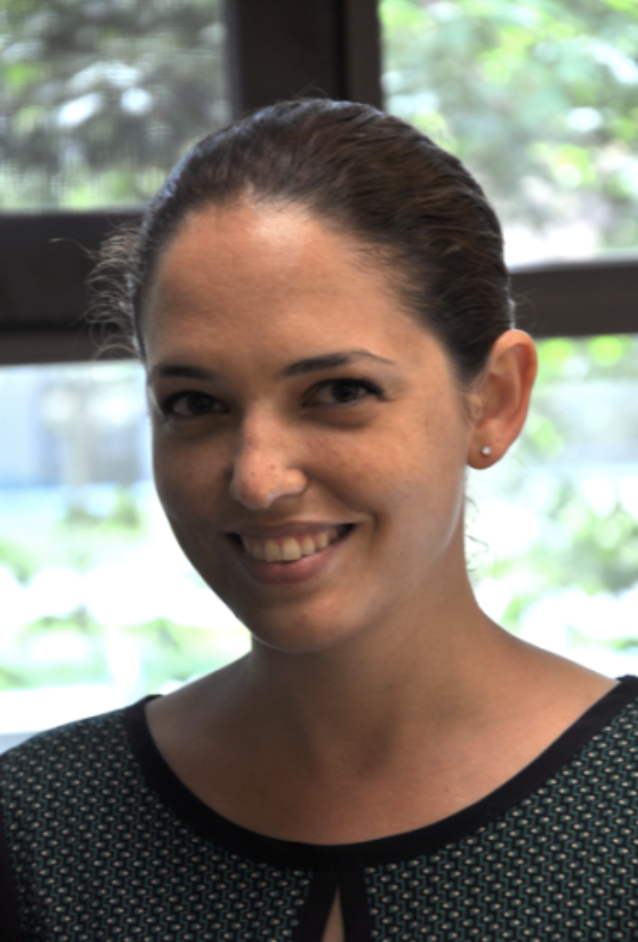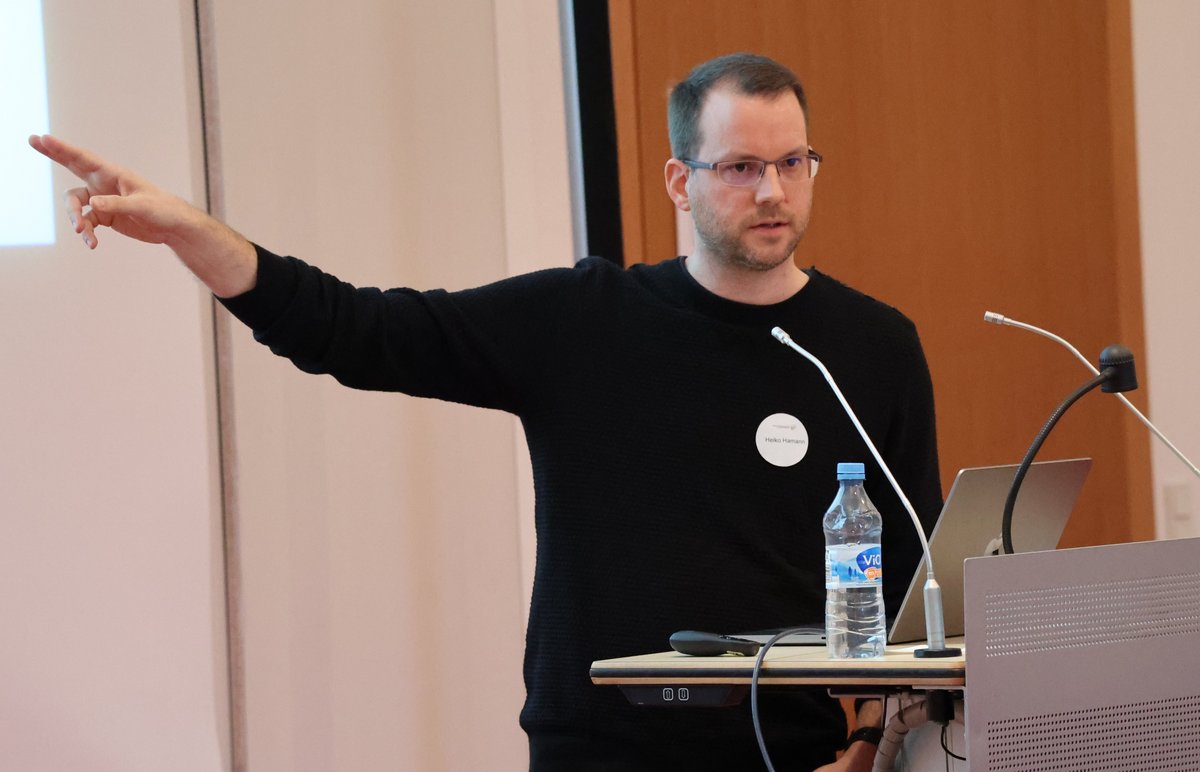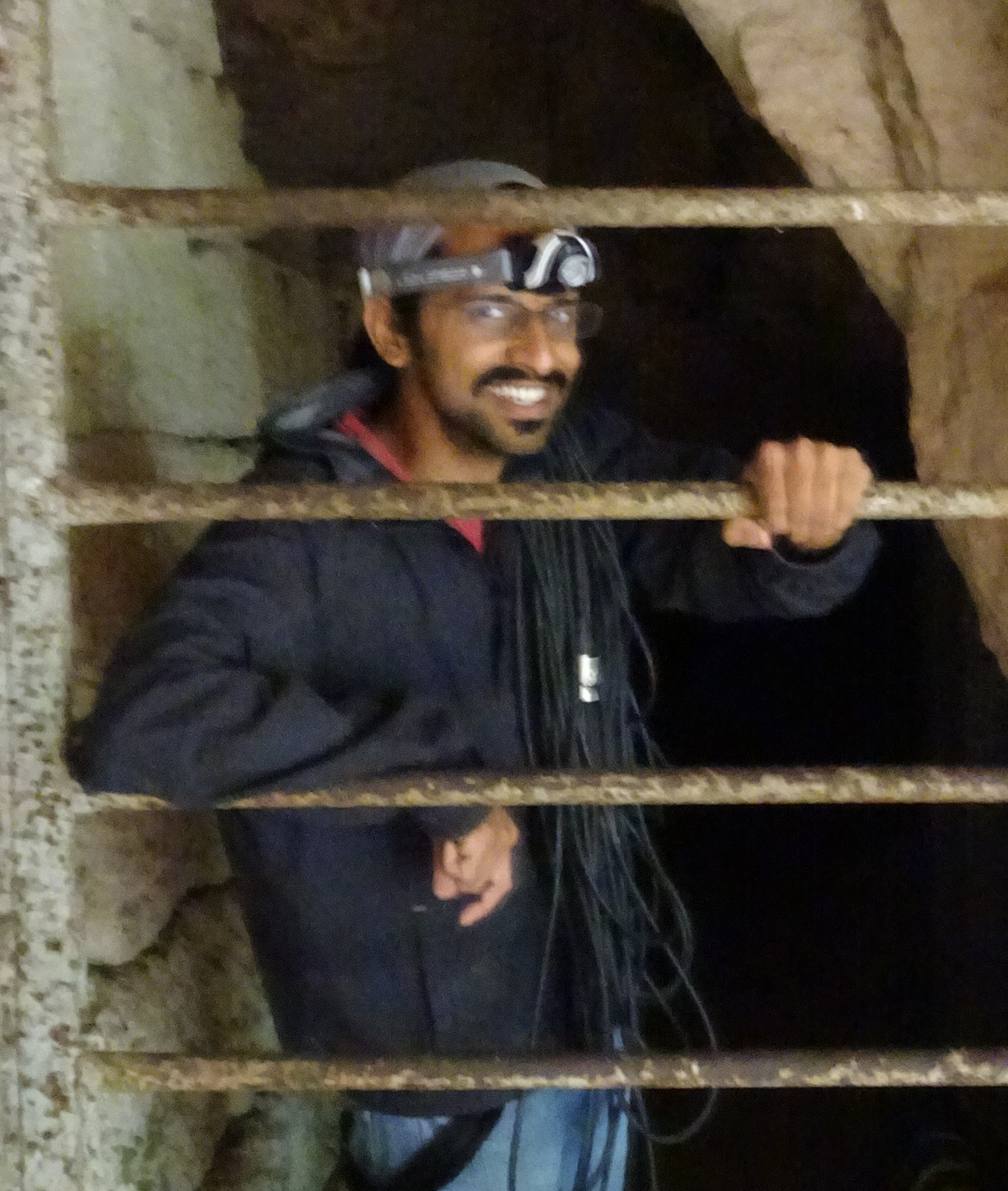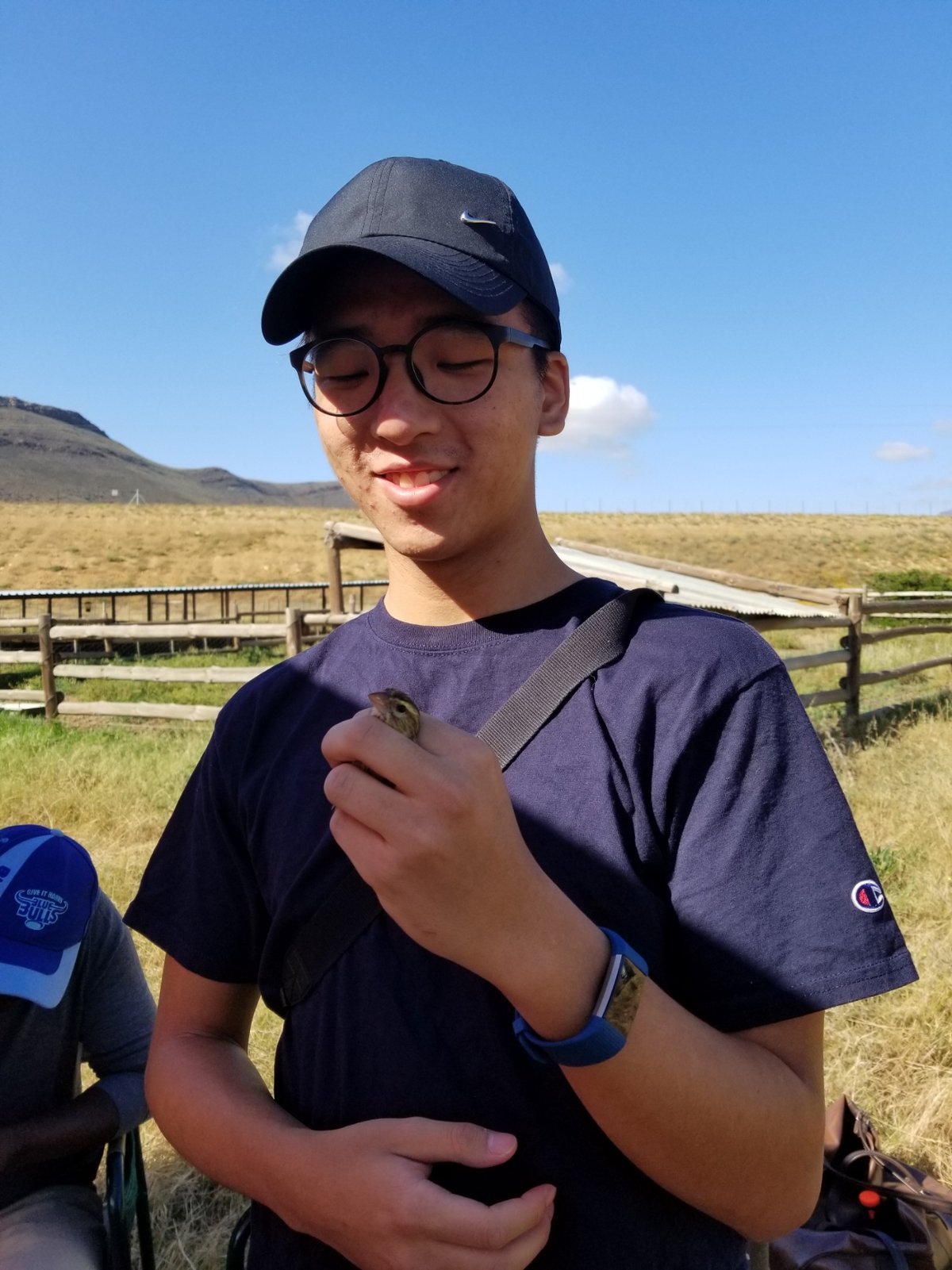Speakers 2023

Keynote Speaker: Kevin Lala, Professor, Biology, University of St Andrews
The future of inheritance
Until recently, for biologists, the term ‘inheritance’ has been almost completely synonymous with genetic transmission. However, the last decades have witnessed an explosion of interest in animal culture, whereby numerous species of vertebrates and some invertebrates acquire adaptive knowledge and skills from conspecifics and heterospecifics, which inform collective decision-making. Supplementing that already replete and challenging literature is an avalanche of investigations into other disparate aspects of extra-genetic inheritance, including epigenetics, where the transmission of epigenetic marks across generations has quite literally ripped up the rule books as to what is biologically possible, and inherited bacteria and other symbionts that collectively make up the inherited microbiome. This literature has generated considerable excitement and debate, but little consensus. Biologists know there is more to inheritance than genes, but how much more, and how important other forms of inheritance are to evolutionary adaptation, remains a matter of dispute. In truth, extra-genetic inheritance has been shrouded in a murky unintelligibility for over a century. Its abstruseness results from a combination of nightmarish complexity and mechanistic diversity which, compared to Mendelian genetics, can leave it looking chaotic, transient, and idiosyncratic. Here I suggest that extra-genetic inheritance does an important job in evolution, but that job is, in the main, distinct from that of genetic inheritance. Understanding this role requires thinking differently about the processes of adaptation and the capacity to evolve, moving away from a gene-centric perspective. Drawing on examples of cultural inheritance in animals, epigenetic inheritance in animals and plants, and the inherited microbiome, I will illustrate how extra-genetic inheritance is best regarded as an essential tool for short-term, rapid-response adaptation. Inheritance is not a single discrete package of genes and other cytoplasmic resources, but a time-distributed developmental process that primarily functions to match descendants to anticipated conditions. Like-begets-like parent-offspring correspondences are nothing more than a side effect of this adaptive reconstruction: the ultimate function of heredity is not stable transmission but accurate prediction.

Orit Peleg, Assistant Professor, Computer Science, Univeristy of Colorado Boulder
Talk 1: Emergent Spatiotemporal Patterns in Bee Swarms
This talk will explore the collective behaviour of honeybee swarms from a physical perspective. Honeybee swarms form large clusters suspended in trees, which lack a nest structure to protect them from environmental fluctuations such as temperature variations, rain, and wind. To achieve dynamic homeostasis and maintain mechanical stability, the swarm must convert environmental cues (mechanical forces, temperature, chemical concentrations) into behavioural outputs (walking, climbing, scenting). Using a combination of biological experiments, theory, and computation, we will investigate how these processes occur, with a focus on the physical mechanisms involved. The talk will cover several stages in the life of the swarm, including the aggregation stage where bees amplify pheromone-based information, the steady-state stage with insights from x-ray computed tomography, and the adaptation stage where the swarm changes shape in response to mechanical and thermal perturbations. By understanding the collective behaviour of honeybee swarms, we can gain important insights into the physics of self-organization and the collective behaviour of biological systems.
Talk 2: Living Orbs of Light: Principles of Firefly Communication
Firefly flashes are a marvel of natural communication systems. During mating season, fireflies gather in large groups, and often produce their species-specific flash pattern. Despite the immense visual clutter from other fireflies in the swarm, and visual occlusions from the terrain, fireflies can perform individual and collective mating signals decipherable by their peers. To better understand these communication signals, we developed a method for recording flash displays in three dimensions. This method allows us to track collective spatiotemporal flash patterns in the swarm, as well as track individual fireflies and their flash pattern. This talk will cover the potential of our method to provide new insights into firefly behaviour, and how using physical and mathematical concepts, e.g., detectability (high signal-to-noise-ratio) and energetic cost and compression (minimization of bits representing information), could deepen our understanding of firefly behaviour. Additionally, the method can be utilized to crowdsource data acquisition on firefly signal dynamics. By shedding light on the intricacies of firefly behaviour, we hope to inspire further study and enhance public understanding of these fascinating creatures.

Armin Bahl, Professor, Neurobiology and Zoology University of Konstanz / CASCB
Zebrafish integration behaviour
Correlated light and electron microscopy reveal recurrent circuit motives in the zebrafish hindbrain visual integrator network. We have an increasingly good mechanistic understanding of the neural circuitry that allows animals to temporarily integrate information during sensory-motor decision-making. However, it remains unclear how these circuits combine, often conflicting, cues from multiple sensory channels to form a single decision. Recently, we have described how the larval zebrafish anterior hindbrain integrates visual motion to decide about swimming direction. Further studies, focusing on other sensory stimuli, have identified the same brain area as a central processing structure for sensory-motor control, raising the hypothesis that the anterior hindbrain forms a general integration hub. To test this idea, we employ a combination of closed-loop behavioural experiments, computer simulations, and two-photon calcium imaging to algorithmically and mechanistically describe how larvae integrate motion and luminance. Our behavioural results argue for a parallel arrangement with inhibitory crosstalk, in which separate modules temporally integrate sensory cues from distinct visual processing streams. Our imaging data supports these findings, revealing spatially separate and partially overlapping activation patterns with slow temporal dynamics. To further investigate the underlying circuit structure, we employ a combination of gene expression analyses with correlated light and electron microscopy. With the feature-rich library of neuronal identities obtained from such experiments, we now seek to improve and further extend our previously proposed biophysically realistic circuit models. Together, our results help to better describe, in mechanistic detail, how brains combine and evaluate information from multiple sensory sources and control behaviour.

Einat Couzin-Fuchs, Group Leader, Neurobiology, CASCB
Foraging dynamics in locusts

Serena Ding, Group Leader, Biology, Max Planck Institute of Animal Behavior / CASCB
Collective behaviour in nematodes
C. elegans has recently emerged as a model for several striking collective behaviours such as aggregation, wurmuration, towering, and network formation. Combining the powerful experimental accessibility of this major lab model organism with the knowledge that collective phenomena are widespread and highly relevant for many nematodes, I exploit different nematode species to understand how and why they behave collectively. I seek to dissect the proximate mechanisms of nematode collective behaviour using tools from quantitative behaviour and modelling, as well as integrating fitness measurements to demonstrate the function of collective behaviour in ecologically relevant nematode groups.

Ahmed ElHady, Neurobiology, CASCB
Mechanistic theory of foraging
Foraging is a foundational decision making behavior performed by all animals. In this talk, I will present the history of foraging theory within behavioral ecology and how one can develop mechanistic models that can be related to the emerging advanced behavioral experiments both in the field and the lab. The questions I will try to address is: how does the animal implement patch foraging decisions? How does the animal account for uncertainty in its environment? How does the decision strategies depend on the structure of the environment?

Jake Graving, Research Scientist, Advanced Research Technology Unit, Max Planck Institute of Animal Behavior
Talk 1: Similarity as Compression: Learning the Hidden Structure of Data with Deep Learning
Understanding the structure of complex high-dimensional data is vital for answering research questions in the behavioural sciences. In this talk, I’ll introduce Self-SNE, a general framework for probabilistically modelling high-dimensional data as an interpretable low-dimensional latent representation. Self-SNE unifies many existing techniques for dimension reduction and representation learning as a family of energy-based models with theoretical guarantees of recovering the independent factors underlying the data generating process. By maximizing the similarity between encoded pairs of data, Self-SNE distils the important invariants of the data while reducing complexity. Importantly, the model can be adjusted along an attraction-repulsion spectrum to prioritize local structure — i.e. clusters or neighbourhoods — or global structure — i.e. smooth, continuous manifolds — thereby revealing an optimal continuum of representations and a multi-scale view of the data. I will present the basic theoretical foundations and practical insights of Self-SNE, showcasing its effectiveness through experimental evaluations on various representation learning tasks, including unsupervised behavioural classification, as well as possibilities for uncovering the hidden structure of collective and social behaviour.
Talk 2: Toward a Causal Understanding of Behaviour
Despite significant progress in behaviour tracking and data collection, there's a gap between our theoretical models of behaviour and the data-driven models we employ to answer scientific questions. Fitting interpretable mechanistic models to data is rarely straightforward, with heuristic methods like data visualization typically used for validating theoretical predictions. Conversely, tractable data-driven models often make incorrect assumptions and ignore critical features of an observed system, leading to a mismatch between theory and observation, and potentially casting doubt on viable theories. In this talk, I'll outline the fundamentals of causal inference, a toolkit with great potential for modelling behavioural data, with an eye toward developing better theory. Causal inference aims to model observed features of a system while also taking into account known (and possibly unknown) dependencies between features, providing a powerful approach for both exploratory and confirmatory data analysis. In other words, this array of statistical methods - including Bayesian networks, counterfactual inference, and do-calculus - can help validate theoretical predictions and generate hypotheses about mechanistic relationships to inform new theory. I'll discuss both the advantages and drawbacks of this approach, emphasizing that although it may not always provide the answers we seek, it can at least help prevent us from completely fooling ourselves.

Heiko Hamann, Professor, Computer and Information Science, University of Konstanz/CASCB
Talk 1: Collective Robotics and Scalability
In this quick introduction to collective robotics and swarm robotics, we study how artificial collective behaviour can be designed and used to control large groups of robots. We visit a number of scenarios, such as self-assembly, clustering, and task allocation. As another aspect, we investigate the extreme capability for system size scalability of collective behaviour with references to robotics and computing.
Talk 2: Design and Modelling of Artificial Collective Behaviour
In this second part, we focus on how artificial collective behaviour for robot systems can be designed and understood through modelling. We look at evolutionary robotics and active inference as design techniques. For the aspect of modelling, we study several models for collective decision-making and the speed-vs-accuracy trade-off.

Liang Li, Project Leader, Robotics, University of Konstanz / CASCB
Robotics in collective behaviour
Bioinspired robotics, which involves engineers drawing inspiration from biological studies to build robots, has long served as a natural link between biology and robotics. Recently, there has been a notable shift in focus towards utilizing robots as state-of-the-art tools for studying animal behaviour, specifically collective behaviour. In this lecture, I intend to delve into the reasons behind the utilization of robots as complementary instruments for theoretical modelling and simulations in the realm of animal behaviour studies. Furthermore, I will introduce how robots are employed to formulate and test hypotheses within the realm of collective behaviour studies. Finally, I will present and analyze several instances where robotics has been effectively applied in the study of collective behaviour here in Konstanz. Overall, this lecture aims to shed light on the evolving role of robots in the realm of animal behaviour research, showcasing their potential as invaluable assets in furthering our understanding of collective behaviour phenomena.
Mackenzie Mathis, Tenure Track Assistant Professor, EPFL
Learnable latent embeddings for joint behavioral and neural analysis with CEBRA
Mapping behavioral actions to neural activity is a fundamental goal of neuroscience. As our ability to record large neural and behavioral data increases, there is growing interest in modeling neural dynamics during adaptive behaviors to probe neural representations. In particular, neural latent embeddings can reveal underlying correlates of behavior, yet, we lack non-linear techniques that can explicitly and flexibly leverage joint behavior and neural data to uncover neural dynamics.
In the first part of this session, I will talk about a recent work where we fill this gap with a novel encoding method, CEBRA (https://cebra.ai/), that jointly uses behavioral and neural data in a (supervised) hypothesis- or (self-supervised) discovery-driven manner to produce both consistent and high-performance latent spaces. We show that consistency can be used as a metric for uncovering meaningful differences, and the inferred latents can be used for decoding. We validate its accuracy and demonstrate our tool's utility for both calcium and electrophysiology datasets, across sensory and motor tasks, and in simple or complex behaviors across species. It allows for single and multi-session datasets to be leveraged for hypothesis testing or can be used label-free. Lastly, we show that CEBRA can be used for the mapping of space, uncovering complex kinematic features, produces consistent latent spaces across 2-photon and Neuropixels data, and can provide rapid, high-accuracy decoding of natural movies from visual cortex.
In the second part of this session, we will apply CEBRA in the context of behavioral analysis on keypoints estimated with the DeepLabCut toolbox. We will discuss different usage modes (supervised and self-supervised), different applications (discovery- or hypothesis-driven training) and metrics to evaluate embedding spaces (goodness of fit, consistency). The hands-on part can be carried out via Google Colab without any installation requirements.

Giovanni Reina, FNRS Research Fellow in Collective Behaviour, Université Libre de Bruxelles
Discovering the marvels of collective decision making
Can a large group of simple robots running decentralised minimalistic algorithms reach a consensus? I show that through simple decentralised voting behaviour, swarms of minimalistic robots can make best-of-n decisions. Using simple robots can be useful in nanorobotics and in scenarios with low-cost requirements. To find the right algorithm, I look at nature where I can find cheap yet efficient solutions to achieve group coordination. My research shows that behaviours that use inhibitory signals outperform behaviours without inhibition, in terms of social homeostasis and resiliency against a minority of misbehaving decision-makers. This work suggests an answer to the longstanding question of why inhibitory signals are widespread in natural systems of collective decision making, and, at the same time, it proposes an efficient mechanism for designing resilient swarms of minimalistic robots. Best-of-n decision algorithms can also be used for collective environmental monitoring. I will show that investigating these models can be very interesting and lead to surprising results. As Anderson said in 1972, More Is Different. In our analysis, we found that in a range of relevant conditions, limiting the communication range or the speed of the robots can improve collective performance. We explain the mechanisms of some of these phenomena with a combination of mathematical models and large-scale robot experiments. While I ran my analysis with robot swarms, the underlying mathematical models are relevant descriptions of also natural systems, from honeybees selecting their nest site to populations of neurons in primate brains making value-sensitive decisions.

Ariana Strandburg-Peshkin, Biology, Max Planck Institute of Animal Behavior / University of Konstanz / CASCB
Vocal communication and collective behaviour

Wataru Toyokawa, Research Scientist, Psychology, University of Konstanz / CASCB
Human Social Foraging
How social learning strategies regulate the wisdom and madness of interactive crowds.
Why groups of individuals sometimes exhibit collective wisdom and other times maladaptive herding has been an enduring conundrum. In the first session of my talk, I will present a theoretical background of how social learning (that is, copying others’ acts) interacts with individual exploration and exploitation behaviour, followed by a demonstration of human social learning task where participants can play a browser-based multi-player social learning game. After the demo, I will provide some empirical data obtained from human behavioural experiments, discussing the challenges of studying collective intelligence dynamics that self-organise through time.
Bridging a gulf between theory and experiment
Collective behaviour is a temporally dynamic process where individuals are updating their beliefs and knowledge through own experience under social interactions. The updated knowledge will then elicit new behavioural patterns, shaping the form of social interactions. Such a "time-depth" perspective to collective decision making or cultural evolutionary dynamics can be modelled using the reinforcement learning framework. In this second part, I would like to present some basic overviews of RL models used in human behavioural research, and show that RL can be applied to study collective decision making. Through a step-by-step, partly hands-on tutorial with R code notebook provided, I will present how such a computational modelling approach is useful in both theory building and making sense of empirical data.
Thiago Varela, Psychology, Princeton
Active Sensing in Primate Vocal Behavior
Abstract: This lecture aims to explore the role of active sensing in the vocal interactions of marmoset monkeys. We focus on their contact vocal behaviors as a mechanism for information acquisition, and compare this framework with two alternative policies: vocal accommodation (optimizing for maximum response probability) and a no-update policy, in which there is no learning throughout a session. Through the use of Bayesian inference simulations and analysis of real vocal exchange data, we provide empirical evidence supporting the presence of active sampling as the predominant strategy in marmoset monkey vocal exchanges when they are out-of-sight of each other. When visual contact is established, a no-update policy is observed, indicating that their vocalizations do not change significantly based on the information provided by the vocalizations of the other marmoset. These results present a novel approach for how non-human vocal interactions can be used to acquire information about social environments.

Katrin Vogt, Group Leader, Neurobiology, University of Konstanz / CASCB
Drosophila flexible behaviours
Making flexible and appropriate decisions is crucial for all animals. Social context or a change in internal states - such as when facing starvation - can influence behavioural responses. This lecture will focus on neuromodulatory mechanisms in Drosophila, how animals modify their decision-making based on the presence of conspecifics, changes in internal state, and external stressors. In my lab, we work with Drosophila larvae and investigate the modulation of feeding on conspecifics and decision-making in different contexts. Generally, flexibility in behaviour is advantageous, as it enables animals to explore novel and broad ranges of stimuli or to avoid harmful stimuli.
Tutorial leaders

Thejasvi Ravindra Beleyur, Biology, University of Konstanz
Tracking vocalizing animals in space and time - the how and what of acoustic localization
Acoustic localization is an extremely useful, yet underutilized tool to track vocalizing animals as they interact with their environment or each other. Acoustic localization has been used to track migrating and singing birds, whales and bats, amongst other animals. Aside from the 'where' (xyz coordinates) of the calling animal, we can also calculate the 'when' (time of emission) of the recorded sound, aside from other aspects such as source level and directionality. Especially for echolocating animals, using the 'where' and the 'when' allows us to reconstruct a fairly comprehensive view of the animal’s sensory experience as an individual and in a group. During this tutorial we will go through the basic experimental considerations while building a set-up, how to use simulations to understand the expected performance of your set-up, and also get our hands messy trying to analyse some experimental datasets.

Christophe Bousquet, Psychology, CASCB
Ordinal Regressions in data analysis of collective behaviour
By observing animals living in groups, it is often possible to classify different individuals according to their rank in a given collective activity. For example, during a collective movement, the order of arrival of group members at a given destination can be recorded. Ordinal regressions are particularly useful for analyzing this type of data. In this tutorial, we will see how to implement ordinal regressions in both the frequentist and Bayesian frameworks in the free R environment. We will then compare ordinal regression analysis to logistic or linear regression analysis. The overall approach of the tutorial will allow you to master the different steps of the analysis, from data generation to graphical illustration of the results, through model checking and comparison with other methods. This will give you more confidence when you need to apply these techniques to your own data.

Alex Chan, Biology, CASCB
Applying Simple Computer Vision Tools in Behavioural Ecology
In this tutorial, I will first introduce current advances in using computer vision and machine learning to study animal behaviour from video data, then hop on a hands-on session to run a simple object detection model on videos of birds. Participants will learn how to use the opencv package in python as a flexible toolkit to read and manipulate videos, then learn to run a pre-trained object detection model (YOLO) to detect birds in video sequences. Finally, we will have a "human vs. AI" competition to determine how well the model performs against human annotation.

Chi-Yu Lee, Neurobiolgy, CASCB
Multi-object tracking
Multi-object tracking plays a vital role in numerous applications, ranging from autonomous driving and surveillance systems to observing animal behaviour in ethological contexts. The ability to track multiple moving objects simultaneously is crucial for understanding complex visual scenes. However, multi-object tracking faces several inherent challenges such as occlusions due to agents’ interaction, and memory-efficient representation of the tracking agents. The technology is often limited by a particular object/animal.
Followed by Alex Chan’s tutorial on computer vision, this tutorial provides an overview in multi-object tracking with a focus on latest algorithms developed to address this challenging task. In this tutorial, an example dataset study will be provided to demonstrate the application of these tracking methods in real-world scenarios.
Case study 1
A dataset of 50 locusts detected by Qualisys motion capture system in a circular arena. Participants will learn how to calibrate video taken by RGB cameras and motion capture system, apply tracking algorithms to identify the identity of individual locusts, plot the trajectory of locusts, and evaluate the tracking results.
Case study 2
Summer school participants are invited to an interactive game and will be given a piece of blue paper and a piece of red paper. The game requires participants to raise the blue or red paper in front of a camera placed in the middle of the room, which conducts online blue/red tracking (or multi-object tracking powered by Trex). The result of the blue/red tracking is sent to a ping pong game.
During the tutorial, the participants will learn colour tracking and design close-loop experiments for their own ping pong game.
